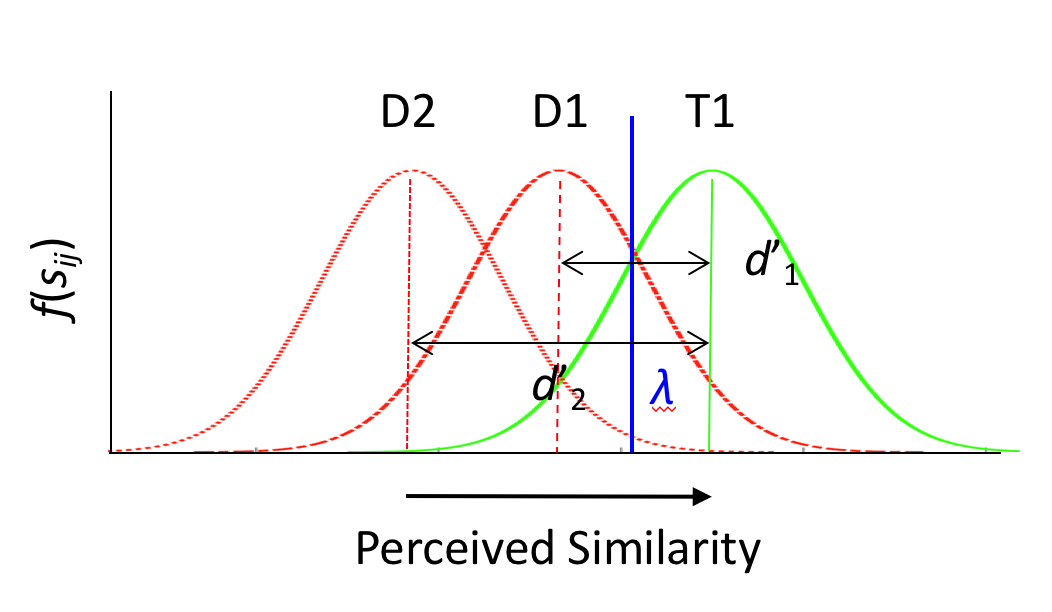



I first started working in this areas as a post doc with Kyle Cave, Nick Donnelly and Tammy Menneer at the University of Southampton. The work described below is more recent, but follows on from the orignal studies run by Kyle and Nick, which were funded by the US Transport Security Adminstration.
| Web | ||
|---|---|---|
| Oliver Zobay | Oliver.Zobay@nottingham.ac.uk | Research Gate |
| Tammy Menneer | T.S.I.Menneer@exeter.ac.uk | Exeter University |
| Nick Donnelly | donneln@hope.ac.uk | Liverpool Hope University |
| Kyle Cave | kcave@umass.edu | University of Massachusetts |
The ability to detect objects in the environment is fundamental to goal-directed behaviour. Psychologists have investigated this ability using visual search tasks, which require observers to detect or identify a target among non-target or “distractors” in the visual field. Data from these experiments has told us much about the way physical relationships between the target and distractors influence performance and informed our understanding of the cognitive architecture that supports visual search (e.g., Feature Integration Theory, Guided Search and the Integrated Competition Hypothesis). Most of this research has focussed on searches for a single-target object. However, this type of search is not typical of many real-word tasks, where observers search for different objects at any one time. Understanding the factors that govern search performance for multiple objects, has important practical implications in situations such as medical or security screening, as well as addressing interesting questions about the relationship between the number of internal representations that guide search and observers’ ability to prioritise and select relevant visual input.
Previous studies have revealed robust costs in the speed and accuracy of target detection when observers searched for one of two, compared to a single-target. These were interpreted by some researchers as evidence of a single-item constraint in attentional guidance; where only one internal representation or “target template” could be used to prioritise visual input at any one time. An alternative explanation is that observers can use separate target templates to guide search, but the requirement to distribute resources across these during the prioritisation and comparison of input during search elicits a reduction in the accuracy of target detection. Oliver Zobay and I used Signal Detection Theoretic models to contrast to the predictions of serial and parallel models of dual-target cost on the accuracy of manual responses in brief displays and the accuracy and latency of saccadic targeting.

Figure 1. Illustration of serial and parallel models of dual-target search. In each model, the observer is required to detect one of two cued orientations. Blue panels represent inferred priority distributions elicited by the active attentional template in short-term memory. In the serial model (Left), the prioritisation of visual input is restricted to a single attentional template, so the observer evaluates the presence of one target at a time. In the parallel model (Right), the prioritisation of visual input is modulated by both templates during search. In this situation, evidence is evaluated across a priority map that includes similarity distributions for the orientations of both targets.
In our study, pre-cues were used to specify the orientation of one or two target orientations. Observers had to report whether the target(s) were present or absent in the display using either a button press or by fixating the target object.

Figure 2. Mean probability and latency of saccades to targets and distractors on single- (A) and dual-target (B) searches. Responses on single-target searches illustrate accurate saccadic targeting of the cued orientation. On dual-target searches, comparisons between objects in the display and both target templates compete for selection, reducing the proportion of fixations to targets and increasing that to distractors with orientations similar to either cue. Blue panels represent changes in the relative distribution of inferred priority distributions during single- and dual-target searches for the same target.
The figure above plots the accuracy of first saccades during single- and dual-target searches. Saccade latencies are comparable while the proportion of saccades to targets is significantly less on dual- than single-target searches. Saccades on dual-target searches are also equally distributed across subsets of distractors that are similar to independently cued targets Signal detection analyses indicate the dual-target cost is best modelled as reciprocal relationship between the number of attentional templates that are active during search and their similarity to subsets of distractors.
The findings above are consistent with the parallel model of dual-target search. Other research supports this conclusion, and recent evidence suggests interactions between visual input and the internal representations that guide search are flexible rather than constrained to a single-item limit. Future research in the lab will investigate this flexibility by exploring the way relationships between targets, distractors and the attentional template(s) determine how and when observers adopt different strategies of dual-target search. Research questions will also focus on differences in the way serial and parallel guidance affect the speed and accuracy of target detection and patterns of saccadic sampling during dual- compared to single-target searches.
Publications relating to this project are linked below. Kyle, Nick, and Tammy have also published a number of studies investigating the dual-target cost. Other research exploring this issue includes work from Jeremy Wolfe’s laboratory in Cambridge, MA, Christian Oliver’s group at the University of Amsterdam and Martin Eimer’s group at Birkbeck University.